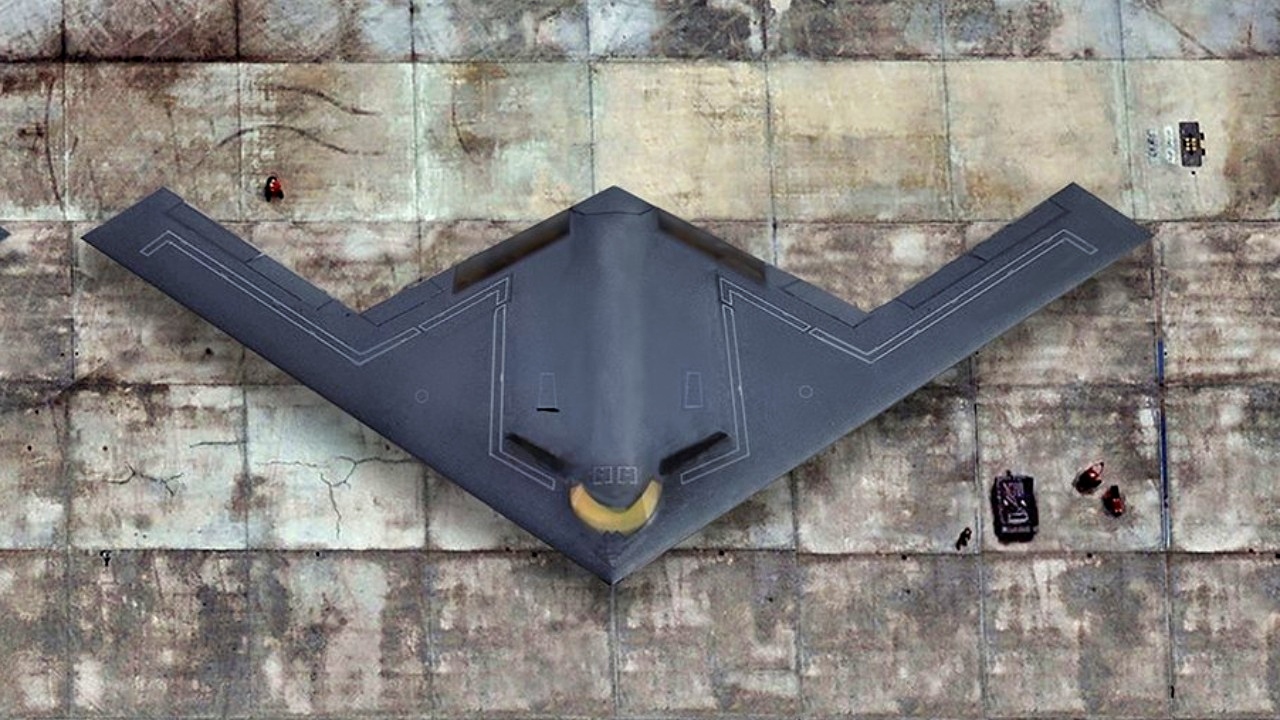Key Points and Summary – The U.S. Air Force’s B-21 Raider program is advancing on schedule, with the second stealth bomber preparing for its maiden flight. The key to the program’s success is its philosophy of “evolution, not revolution.”
-By deliberately refining the proven flying-wing design of its B-2 predecessor, Northrop Grumman and the Air Force are avoiding the risky technological leaps that led to the B-2’s crippling cost overruns and saw its planned fleet of 132 cut to just 20.
-This more practical approach ensures the B-21 remains a viable and producible asset for countering modern threats.
The B-21 Raider Just Keeps Winning
The second of the U.S. Air Force’s highly-anticipated B-21 Raider bombers will reportedly soon take to the skies, and the B-21 program seems to be going ahead according to schedule, according to General Thomas A. Bussiere, the head of Air Force Global Strike Command.
The first of the B-21 Raider bombers made its debut flight late in 2023.
It is no coincidence that the B-21 Raider’s predecessor, the B-2 Spirit, also a stealth bomber, bears outward similarities to the newer bomber.
Rather than trying to field an overly ambitious and potentially risky design — with the associated financial and timeline risks — the newer bomber is a refinement of the initial Cold War-era B-2 bomber.
Although the exact number of B-21s that can be built per annum is not known, budgetary documentation and comments from lawmakers indicate that the number is around seven, according to Air & Space Forces Magazine. However, greatly aiding the B-21 production run was the recent budget reconciliation bill, which awarded an additional $4.5 billion for the program.
Slower Production, but More Secure for it
Last year, William LaPlante, the former acquisition and sustainment head for the Pentagon, explained that the B-21’s initial low production rate was to avoid the kinds of budgetary setbacks that put the kibosh on the B-2 Spirit program production numbers: just 20 of the planned 132 airframes were ultimately built.
“I don’t believe the program will be at risk if it continues to go as successfully as it is,” LaPlante said. “Usually, programs get at risk when they get delayed or they have trouble in technology or capability or capacity in the production phase… I’m very happy right now, with the stage of the developmental test with the B-21.”
The design team, as well as the engineering and assembly teams at Northrop Grumman, have decades of experience with stealthy jet design, a factor that LaPlante sees as an inherent advantage of the B-21 Raider program.
“To be fair, the company, and our operators, maintainers and acquisition professionals and engineers, do have a little bit of leg up on previous weapon systems with the 30-plus years of understanding the dynamics and what we learned on the B-2,” he said. “We’ve taken those lessons in operations, and, you know, aviator air vehicle interfaces and ease of maintenance… All that comes together.”

The B-21 Raider program is on track and continues flight testing at Northrop Grumman’s manufacturing facility on Edwards Air Force Base, California. The B-21 will have an open architecture to integrate new technologies and respond to future threats across the spectrum of operations. The B-21 Long Range Strike Family of Systems will greatly enhance mission effectiveness and Joint interoperability in advanced threat environments, strengthening U.S. deterrence and strategic advantage. (U.S. Air Force photo)

The B-21 Raider was unveiled to the public at a ceremony December 2, 2022 in
Palmdale, Calif. Designed to operate in tomorrow’s high-end threat environment, the B-21 will play a critical role in ensuring America’s enduring airpower capability. (U.S. Air Force photo)
In 3 Words: Evolution, Not Revolution
Instead of revolution, the B-21 opts for evolution, though the U.S. Air Force, as well as Northrop, maintain that the bomber is next-generation in terms of capabilities compared to the B-2 Spirit — though Northrop still calls that earlier stealth bomber “preeminent.
“General Bussiere explained that the United States Air Force “learned a lot from how we did initial and then upgraded capabilities on the B-2, and all those lessons were incorporated into the design.” He added that “there are other unique aspects of the B-21 that were not part of the B-2 production that will make it… a more practical platform to maintain.”
Another significant factor in favor of the B-21 Raider is the operational environment into which it will be introduced. While the B-2 came of age while the United States was quickly on its way to ascendance as the world’s lone superpower, the United States is today increasingly jostled by its geopolitical rivals.
While the B-2 Spirit did not have as obvious a use-case scenario, the B-21, in contrast, would apply to a variety of theaters and combat scenarios against the United States’ increasingly bellicose and revanchist adversaries.
About the Author: Caleb Larson
Caleb Larson is an American multiformat journalist based in Berlin, Germany. His work covers the intersection of conflict and society, focusing on American foreign policy and European security. He has reported from Germany, Russia, and the United States. Most recently, he covered the war in Ukraine, reporting extensively on the war’s shifting battle lines from Donbas and writing on the war’s civilian and humanitarian toll. Previously, he worked as a Defense Reporter for POLITICO Europe. You can follow his latest work on X.
More Military
We Almost Touched the F-117 Stealth Fighter










